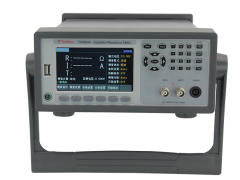Newest
Do the connection methods show any differences when tested with an insulation resistance tester in C
When measuring motors, cables, and transformers with an insulation resistance tester, there are significant differences in the wiring methods, which are mainly due to the different structures of the equipment, insulation characteristics, and test objectives.
When testing a three-phase asynchronous motor, the "single-phase testing method" is often used: connect the L end of the tester to one phase winding of the motor, the E end to the motor housing, and leave the other winding suspended, and measure the insulation of the three-phase windings to the shell in turn; if measuring the insulation between windings, connect the L end to one phase winding, the E end to another phase winding, and leave the third phase suspended.
When testing the cable, it is necessary to distinguish between single-core and multi-core cables. When testing the insulation of a single-core cable, the L end is connected to the core wire of the cable, the E end is connected to the shielding layer of the cable, and the non-test end core wire is short-circuited and grounded with the shielding layer; When testing a multi-core cable, in addition to testing the insulation of each core wire to the shielding layer, it is also necessary to test the insulation between core wires. At this time, the L and E ends are connected to two different core wires, and the remaining core wires are short-circuited and grounded.
When measuring the power transformer, the connection should be made according to the winding type: when measuring the high-voltage winding to the low-voltage winding and ground, the L end is connected to the high-voltage winding, and the E end is connected to the low-voltage winding and the transformer case (shorted); when measuring the low-voltage winding to the ground, the L end is connected to the low-voltage winding, and the E end is connected to the case, and the high-voltage winding needs to be shorted and suspended.
No matter what device is being tested, power off and discharge before connecting the wires, ensure that the terminal is clean and free of oxidation, and avoid measurement data distortion or device damage due to wiring errors.



